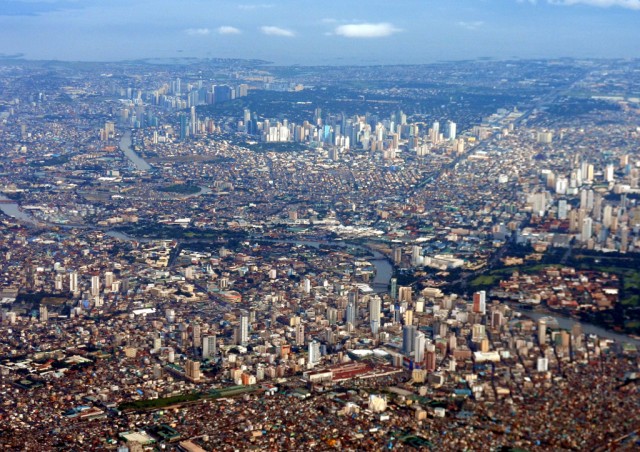Manila
CONSIDERED TO BE the best harbor in the Far East, known as the “Pearl of the Orient,” Manila has been a commercial and cultural hub of the PHILIPPINES, and of Southeast Asia, for over four centuries. Ferdinand MAGELLAN claimed the island of LUZON for SPAIN in 1521, as a strategic point of access to the Spice Islands of the Far East. Manila, on the northwest coast of the island, was captured from its sultan in 1571 and soon became the main exchange point for goods traveling between Macao and Acapulco—silver from MEXICO was traded here for silk from south CHINA. Manila became a rival port to Batavia, the main port of the Dutch East India Company (today's JAKARTA, INDONESIA). By the 17th and 18th centuries, it was essentially a Chinese city, following the pattern of most commercial cities in Southeast Asia, with manual labor provided by Chinese-Filipino or Mexican-Filipino mestizos.
The revolt against Spain in 1896 started here, and the arrival of the UNITED STATES in Manila Bay in 1898 signaled the end of nearly four centuries of Spanish rule. The United States did not depart as planned, however, and maintained a protectorate over the emerging state until it was granted full independence in 1946. American presence remained heavy after independence, however, particularly in the Manila area, because of its large military presence at Subic Bay naval base and Clark Air Force Base, which were given up only in 1992.

The city, originally called Maynilad (“there is nilad,” a local white-flowered mangrove), was a Muslim sultanate from the early 16th century. Geographically situated on a plain at the confluence of several mountain ranges, the Laguna de Bay and Manila Bay, it was an obvious location for an urban area that today forms the core of the world's seventh-largest metropolitan area, with about 10.3 million residents in Manila proper and 16 other cities (including Quezon City, which is actually more populous than Manila and was the capital city from 1939 to 1976). It is an amazing mixing bowl of cultures, combining elements of Spanish, Chinese, English, and Tagalog culture.
The city is centered on both sides of the Pasig River, where it enters Manila Bay. The old walled city, or Intramuros, is on the southern, or left, bank of the river. It consists of old Spanish houses, churches and convents, and narrow streets and is surrounded by a defensive wall, built around 1790 to defend against attacks form the Dutch and British. The old town also includes the old city hall (Ayuntamiento) and the University of Santo Tomas, founded by the Dominican Order in 1605. The city's other major university, and the oldest in Asia, is the University of the Philippines, founded by King Philip II of Spain in 1585.
North of the river lies the Binondo section, Manila's Chinese commercial district, famous for its wild bargain basement bazaars in the Divisoria. Nearby is the old governor's palace, Malacanang, now the residence of the Philippine president. North and south of the river the city spreads out in newer neighborhoods, including Ermita and Malate, the center for tourist hotels, restaurants and nightclubs, and Quiapo, Manila's congested downtown. As development continued south along the bay, the large Rizal Park was surrounded by more aristocratic suburbs in the 19th century, and by later American developments, which bear the names of men like President William McKinley and Admiral George Dewey, the victor of the battle of Manila Bay in 1898.
The city has spread out from the bay to join into an urban conglomeration with Quezon City to the northeast and other smaller towns. The language spoken around the bay, Tagalog, has become the official national language, though English is the lingua franca used in many of the southern islands. Manufacturing is highly concentrated in metro Manila, more than half of the total of the Philippines.
Manila is the center of international trade for the Philippines, plus domestic trade between islands. Raw materials brought in from the interior of Luzon or from other islands is processed and exported, from sugar, rope, and cigarettes/cigars to shoes and woven textiles. The city struggles with air and water pollution. The government has designs to transform the former U.S. military bases into free-trade zones. The search for foreign investment in this project has found some success from Taiwan, but not enough, because of the economic downturn throughout Asia in the 1990s.